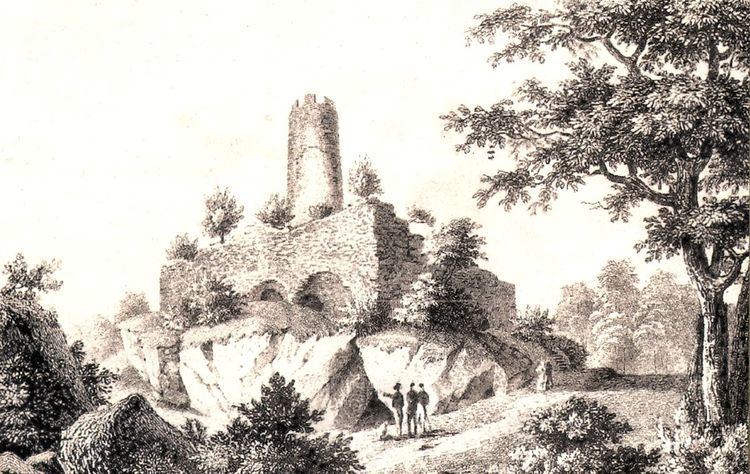 | ||
The History of Freiburg im Breisgau can be followed back almost 900 years. Around 100 years after Freiburg was founded in 1120 by the Zähringer, until their family died out. The unloved Counts of Freiburg followed as the town lords, who then sold it onto the Habsburgers. At the start of the 19th century, the (catholic) Austrian ownership of the town ended, when Napoleon, after having invaded the town, decreed the town and Breisgau to be a part of the Grand Duchy of Baden in 1806. Until 1918, Freiburg belonged to the Grand Duchy, until 1933 to the Weimarer Republic and Gau Baden during the Third Reich. After the Second World War, the town was the state capital of (South) Baden from 1949 until 1952. Today, Freiburg is the fourth-largest city in Baden-Württemberg.
Contents
Founding of the Castle and the City
The first reference of habitation in the modern-day Freiburg, the Wiehre and Herdern, was documented in 1008. A trade route crossed through south of Zähringen, a modern-day part of Freiburg, and Herdern near the Dreisam, through the Rhine Valley, modern-day Zähringer-, Habsburger- and Kaiser-Joseph-Straße and an imperial road towards Breisach/Colmar (modern-day Salz- and Bertoldstraße).
In approximately 1091, Berthold II of Zähringen built a castle, Castrum de Friburch, on top of the modern-day Schlossberg in order to control the trade routes. A settlement of servants and craftsmen at the foot of the castle belonged to the new area, with the settlement being situated in the modern-day region of the Altstadt (English Old Town) and Oberlinden, which stood under particular protection from the lord. The settlement grew, which was founded by Konrad, the brother of the current Duke, Berthold III, and he then went on to grant a market for the settlement in 1120. He granted the residents extensive privileges, such as the relief from farmstead taxes and the free voting for the pastor.
Also noticeable was the planned network of water, called Bächle, in 1170, to provide water to the Altstadt in the streets, whose water comes from the Dreisam and was used to supply industrial and cleaning water in the Middle Ages, which also served as available means to extinguish fires. Drinking water was supplied to the town by wooden pipes called (Deicheln, in Freiburg Deichele) from sources above the city and was accessible from fountains. Runzgenossenschaften, or canal cooperatives, were formed to manage and maintain the watercourses in the city, such as the Bächle and Runzen (canals) for trade operation (such as tannery, pellet grinding, etc.
City's rise
Silver, which was discovered at the end of the 10th century to the west of the Black Forest, made the city richer. The Zähringer received the mining rights from the Bishops of Basel, who in turn had received the mountain shelf from Emperor Konrad II in 1028. With the rise of Freiburg, the city church, where Bernhard von Clairvaux had preached the Second Crusade in 1146, soon turned out to be too small, which meant the last ruler of the Zähringer dynasty Bertold V. began the construction of a new parish church around 1200. The Freiburg Minster was first built in Romanesque style, but later finished in Gothic. After his death in 1218, Bertold V. was buried as the last Zähringer in the Minster founded by him. A council already existed before 1178 under his predecessor, Bertold IV. The council was established during Bertold V's reign. Probably the council in Freiburg, like in the episcopal cities of the Upper Rhine, developed from a township advisory council, which emerged from the municipal community involved in the court.
The Counts of Urach as Counts of Freiburg
After Zähringer's died out in 1218, Egino I, the nephew of Bertold V, the first Count of Urach, who then called themselves Counts of Freiburg and resided in the Schlossberg castle above Freiburg. Since the citizens did not trust their new rule, they wrote their old rights granted by the Zähringen into a council constitution (the Stadtrodel of 1218), after which 24 councilors from the old ruling houses ruled Freiburg. Starting from 1248 councils which changed yearly supervened. At the end of the 13th century, craftsmen came to the town council through the guilds.
In the 13th century, several clerical orders were built within the city walls. The Dominicans founded the Preacher's Monastery, Predigerkloster, in 1236, where Albertus Magnus held office of the post-mortem from 1236 to 1238. From 1240 the first mention of a Johanniterhaus is dated. In 1246, Count Konrad surrendered the Martinskapelle to the begging of the Franciscans with four court houses. The barber monks erected their monastery there, and until 1318 they built the chapel to the still existing Martinskirche. The origins of the German Order of Freiburg date from 1258. In the narrow old town of 1278, the Augustiners between Salzstraße and Stadtmauer found a place for their monastery.
